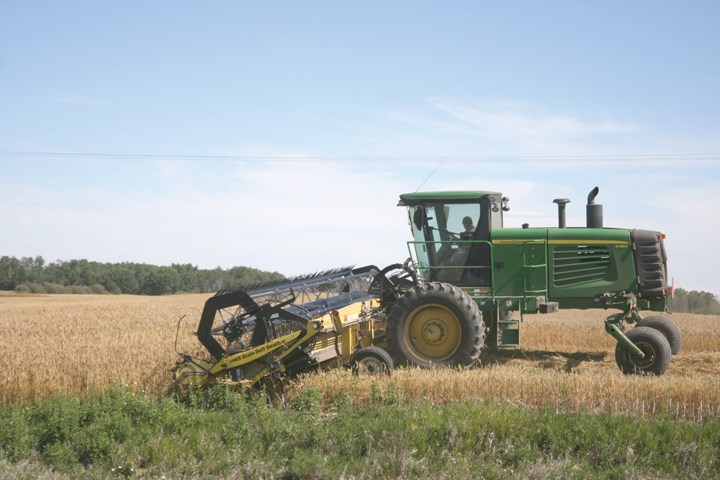Relatively warm and dry weather has allowed producers to continue making good time with harvest, according to Saskatchewan Agriculture’s Weekly Crop Report. Twenty-six per cent of the crop is now in the bin, well ahead of the five year (2012-2016) average for this time of year of 16 per cent combined. Twenty-four per cent of the crop is swathed or ready to straight-cut.
Harvest is most advanced in the southwestern region, where 49 per cent of the crop is now combined. The southeastern region has 37 per cent combined, the west-central region 23 per cent and the east-central region 14 per cent. The northeastern region has four per cent combined, while the northwestern region has five per cent of the crop in the bin.
Ninety-eight per cent of fall rye and winter wheat, 76 per cent of lentils, 74 per cent of field peas, 42 per cent of mustard, 32 per cent of durum, 26 per cent of barley, 21 per cent of triticale, 14 per cent of spring wheat and 10 per cent of canola have now been combined. Eighteen per cent of soybeans, seven per cent of oats and chickpeas, two per cent of canary seed and one per cent of flax have been combined. Thirty-nine per cent of canola and 25 per cent of spring wheat and mustard are swathed or ready to straight-cut.
The majority of the province received little to no rainfall this past week; the highest rainfall for the week (10 mm) was reported in the Rama area. The Pierceland area still holds record for the most rainfall in the province since April 1 at 543 mm.
With the warm temperatures and lack of rainfall this past week, topsoil moisture conditions continue to deteriorate. Across the province, topsoil moisture on cropland is rated as one per cent surplus, 26 per cent adequate, 44 per cent short and 29 per cent very short. Hay land and pasture topsoil moisture is rated as one per cent surplus, 20 per cent adequate, 37 per cent short and 42 per cent very short.
The majority of crop damage this past week is attributed to lack of moisture, insects and strong winds. Producers continue to scout for insects such as bertha armyworm in canola.
Producers are busy combining, desiccating crops and hauling bales and grain.
SaskPower received seven reports of farm machinery coming into contact with power equipment last week, bringing the total in August to 19. SaskPower reminds producers to be aware of their surroundings at all times. More safety information is available at www.saskpower.com/safety.
A complete Crop Report is available at http://www.publications.gov.sk.ca/redirect.cfm?p=86868&i=101019.
Follow the 2017 Crop Report on Twitter at @SKAgriculture.

